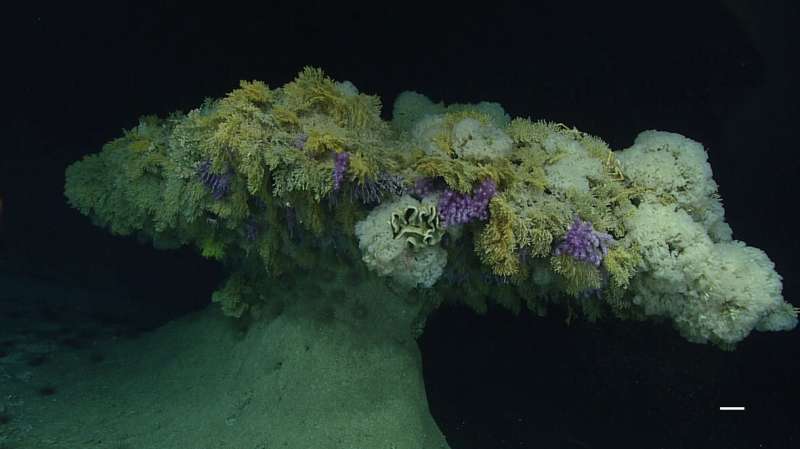This article has been reviewed according to Science X's editorial process and policies. Editors have highlighted the following attributes while ensuring the content's credibility:
fact-checked
peer-reviewed publication
proofread
Using deep sea biology data in the undergrad classroom

SUNY Geneseo's Assistant Professor Mackenzie Gerringer and 13 biology undergraduates and alums partnered with the National Oceanic and Atmospheric Administration's (NOAA) Ocean Exploration program to study the deep seas in an online classroom. Their project focused on how to use deep-sea biology data in the classroom and its educational benefits. Gerringer's students also produced unique research findings using NOAA data that may inform conservation efforts of deep-sea ecosystems. The project results were published this week in Frontiers in Marine Science.
The article shares lessons from SUNY Geneseo's Marine Biology course and presents a model for bringing deep-sea research into undergraduate classrooms. As Gerringer notes, access to the deep oceans is limited to a select number of researchers, in large part due to the costs of ship time.
Over the years, programs like NOAA Ocean Exploration have increased accessibility to the deep seas for scientists and the public through telepresence technology. Using telepresence, the program broadcasts live footage of deep-sea exploration through a remotely operated vehicle. NOAA Ocean Exploration provides valuable opportunities for research and education by sharing the video and other data open access.
"We hope this study will inspire others to use the incredible resources that NOAA Ocean Exploration and other telepresence-enabled programs offer. Opportunities for undergraduates to engage in deep-sea research increase the accessibility and strength of the marine scientific community," says Gerringer.
Science is a process driven by questions. In training to be scientists, students develop skills in asking these scientific questions and employing the scientific method through research. Some fields, like deep-sea biology, are challenging to bring into undergraduate classrooms. But, as the Geneseo and NOAA Ocean Exploration team show, it can be done. Students who have the opportunity to learn science content and who can practice asking questions by engaging in original research benefit academically and experience increased feelings of belonging in the sciences.
The habitat students investigated in this original research study was a deep-water coral reef off Jarvis Island, about 1,000 miles west of Hawai'i, in the Pacific Remote Islands Marine National Monument. Coral reefs in shallow waters captivate due to their beauty, diversity, and critical ecosystem functions. Though less accessible, corals also live in deep waters, relying on plankton and sinking organic material for nutrients.
Deep-sea corals extend to depths greater than 13,000 feet. These corals also contribute essential habitat to a wide diversity of other deep-sea species, including brittle stars, worms, crabs, barnacles, and fishes. Because deep-sea corals can be very slow-growing, these habitats are especially vulnerable to human impacts and are essential to study.
In the fall of 2020, the Marine Biology lab class at SUNY Geneseo studied these deep-sea coral habitats to investigate the effects of habitat rockiness, or rugosity, on the diversity and abundance of organisms in the community. Students who participated in original research during this study reported increasing their understanding of deep-sea ecosystems, gaining experience in the scientific process, and feeling stronger senses of their own science identities. The collaborative nature of the work also helped students develop their teamwork, communication, and leadership skills.
"The deep oceans are the largest habitat on our planet and are home to a beautiful diversity of organisms," says Gerringer. "We need a broad and diverse community of researchers in the ocean sciences so that we can better understand and protect these incredible ecosystems."
More information: Mackenzie E. Gerringer et al, Deep-sea biology in undergraduate classrooms: Open access data from remotely operated vehicles provide impactful research experiences, Frontiers in Marine Science (2023). DOI: 10.3389/fmars.2022.1033274. www.frontiersin.org/articles/1 … rs.2022.1033274/full
Journal information: Frontiers in Marine Science
Provided by State University of New York at Geneseo





















